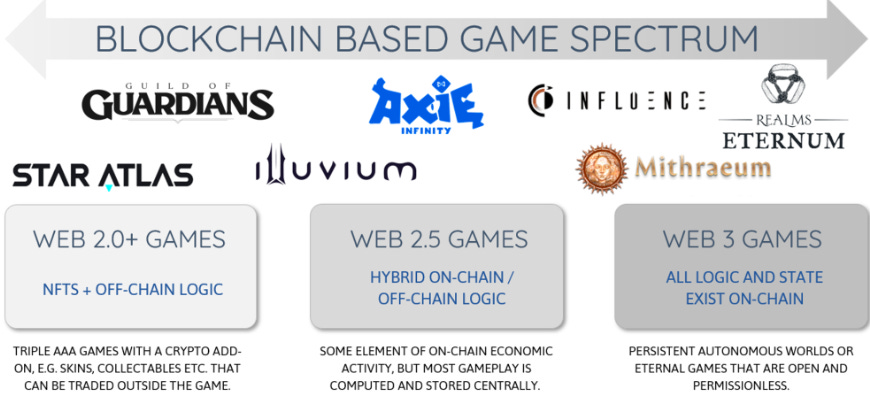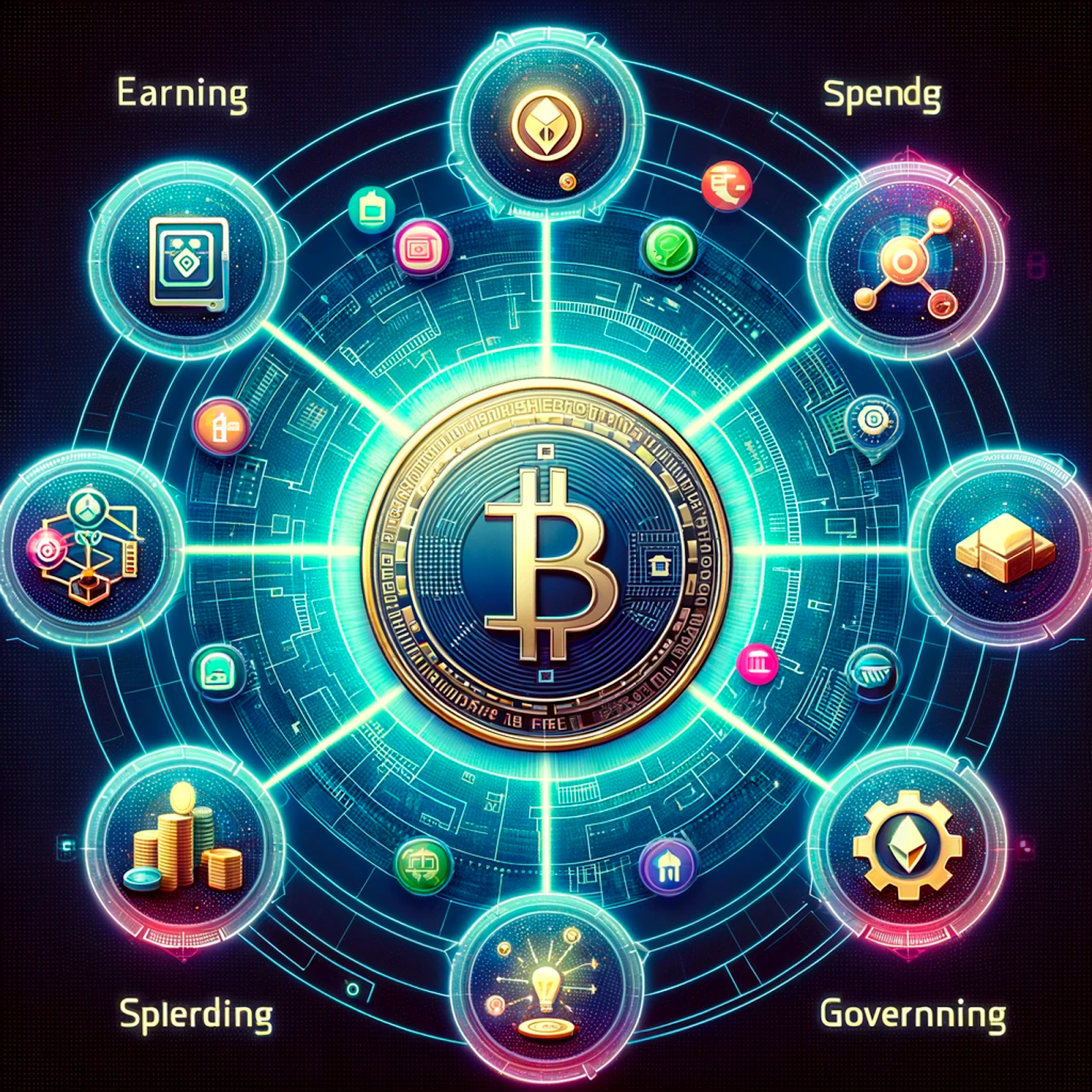Since the GameFi market collapsed and became degraded in the Play to Earn model, there has been a lot of disagreement about GameFi’s tokenomics model at the time. In this article, let’s join Weakhand to learn about GameFi’s current tokenomics model and see if it brings any difference compared to past models.
Before jumping into the article, everyone can refer to some of the following articles to understand better.
- What is GameFi? GameFi’s operating mechanism
- Will Fully Onchain Gaming (FOCG) become the next trend in the market?
- GameFi is transforming and ready to get back on track
- What is Play to Earn? The trend opens a new era for Gaming
GameFi Overview
GameFi or also known as “Game Finance” is a term first mentioned by the founder of Yearn Finance Andre Cronje to refer to Gaming projects that incorporate DeFi elements in them. Players can earn cryptocurrency and NFT rewards by completing tasks or battling other players.
Since Axie Infinity emerged, the concepts of GameFi and Play To Earn have quickly become increasingly popular, and similar breeding games (such as Farmers World, StepN,…) have also appeared. . But the dual token model with 2 tokens where one token is used for governance and one token is used for rewards has proven to be unsustainable and created a downward death spiral for GameFi projects.
The lifecycle of such games is usually very short, lasting only a few weeks to a few months. At the present time, the 2 token model seems to no longer be applied in most GameFi projects and instead is only a single token model. In addition, the definition of GameFi is now also starting to change to Web3 games (Fully Onchain Games) and Web2.5 Games (such as Game 3A and previous GameFi lines such as Axie Infinity, The Sandbox, ….). The difference between them depends on the level and method of using Blockchain technology. Next, let’s take a brief look at these two GameFi genres.

The concept of GameFi at the present time has completely changed
Fully Onchain Games – Redefining the concept of Web3 Games
The first is Fully Onchain Games – a game genre that has redefined the concept of Web3 Games on the market with the following outstanding features:
- Data comes from Blockchain: Blockchain is not just a backend data storage nor just a “copy” of data stored in dedicated servers. All meaningful data is accessible on the Blockchain, not just data about user ownership of assets. In this way, Fully Onchain Games can take full advantage of Blockchain for transparent data storage and interoperability without relying on third parties.
- The logic and rules in the game are implemented through Smart Contract.
- Development in the game follows the open trend: All source code in the game is open source and can be accessed by anyone. So third-party developers are free to re-implement the game, customize or even branch out the in-game experience according to their own desires.
- The game lives forever on the Blockchain: Because everything related to the game is open source and deployed on the Blockchain, even if the core developer is no longer developing, the game still exists present and function normally.
-
Supported game types: Because it is a completely Blockchain-based game, Fully Onchain Games is only suitable for some genres that do not require a low latency environment such as: turn-based RGP, ACT puzzle, card game , gambling or open world.
Game Web2.5 – The rest of the GameFi world
Web2.5 Games are a transitional form between traditional games (Web2 Games) and Fully Onchain Games (Web3 Games). The common point of Web2.5 games is to combine traditional game features with some Blockchain elements.
These games may include decentralized elements such as using Blockchain to manage in-game assets or player transactions in the game but other remaining parts such as Game logic, state and the operating environment is often centralized.
However, compared to Fully Onchain Games, Web2.5 Games can offer better performance and broader usability because they are not built entirely on the underlying architecture of Blockchain. In addition, Web2.5 games can support all popular game genres today such as MMORPG games (Massive Multiplayer Online Role-playing Games), Moba Games or FPS games.
GameFi’s Tokenomics Model

GameFi’s tokenomics model
GameFi’s Tokenomics model can be roughly divided into two types, which are Dual Token and Single token models. In there:
The Dual Token model has become extremely popular in the past with typical Play To Earn games such as: Axie Infinity, …. With this Dual Token model, there will be two types of tokens: management tokens and reward tokens. An example of a game using this Dual Token model is Axie Infinity, in which the AXS token is the administrative token and is considered the premium currency in the game and the SLP token is the reward token when players participate in the game.
The Dual Token model was very popular in the past but is no longer used much because of a weakness in this model, the inflation of reward tokens. With increasing selling pressure and the decline of reward tokens, users earn less over time and the project also loses its appeal to players.
The model used recently is Singer Token in which GameFi’s tokenomics model includes only 1 single token and the economic cycle is completely dependent on this token. Some popular games today such as Big Time, Shrapnel or Parallel all use this Singer Token model.
With the Singer Token model, we will have 4 development directions for the economic model in GameFi projects as follows:
- First development direction: Use USDT, BNB, ETH,… to buy NFT and receive tokens through the game. With this approach, the input threshold will be fixed and the player’s income will fluctuate according to the token price.
- Second development direction: The input threshold is fixed and the player’s daily income is also fixed. With this model, it will not affect players’ income when token prices increase or decrease.
- Third development direction: Input threshold and income fluctuate according to token price. This model will become more attractive to users if token prices increase but is also counterproductive if token prices decrease.
- Fourth development direction: The input threshold is fluctuating and the income is fixed. With this model, almost no projects apply because it is unfriendly to both the project and the game players.
In addition to Tokenomics, GamePlay is also extremely important
For a GameFi project, the tokenomics model is extremely important, but besides that, Gameplay is also an equally important factor. For a GameFi project to become attractive and attract users, it is necessary to harmoniously combine Gameplay and tokenomics in the game.
Talking about Gameplay, GameFi projects have recently improved significantly. Previously, during the boom period of GameFi 2021, most projects had relatively simple Gameplay, only revolving around a few in-game activities, but now the Gameplay has become much more diverse. We can mention outstanding games like Big Time or Shrapnel, in addition to improving gameplay, there is also an upgrade in graphics in the game. This brings impressive experiences to players similar to when playing web2 games in addition to receiving rewards in the form of project tokens.
summary
In general, at the present time, we are seeing the positivity of GameFi titles being released with thoroughness in all aspects from tokenomics to gameplay to in-game graphics. Above is all the information that I want to introduce in this article, hope everyone has received useful knowledge.


